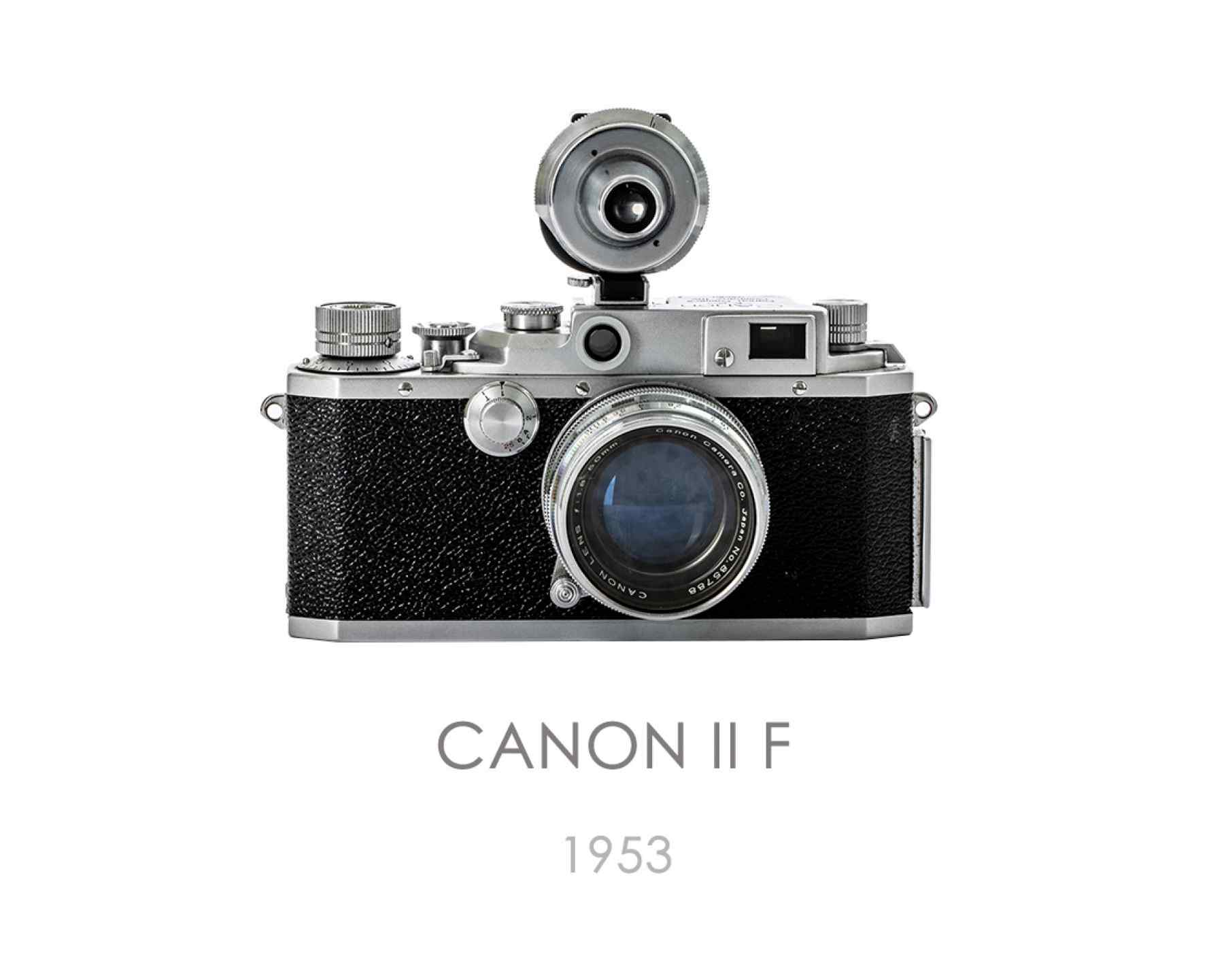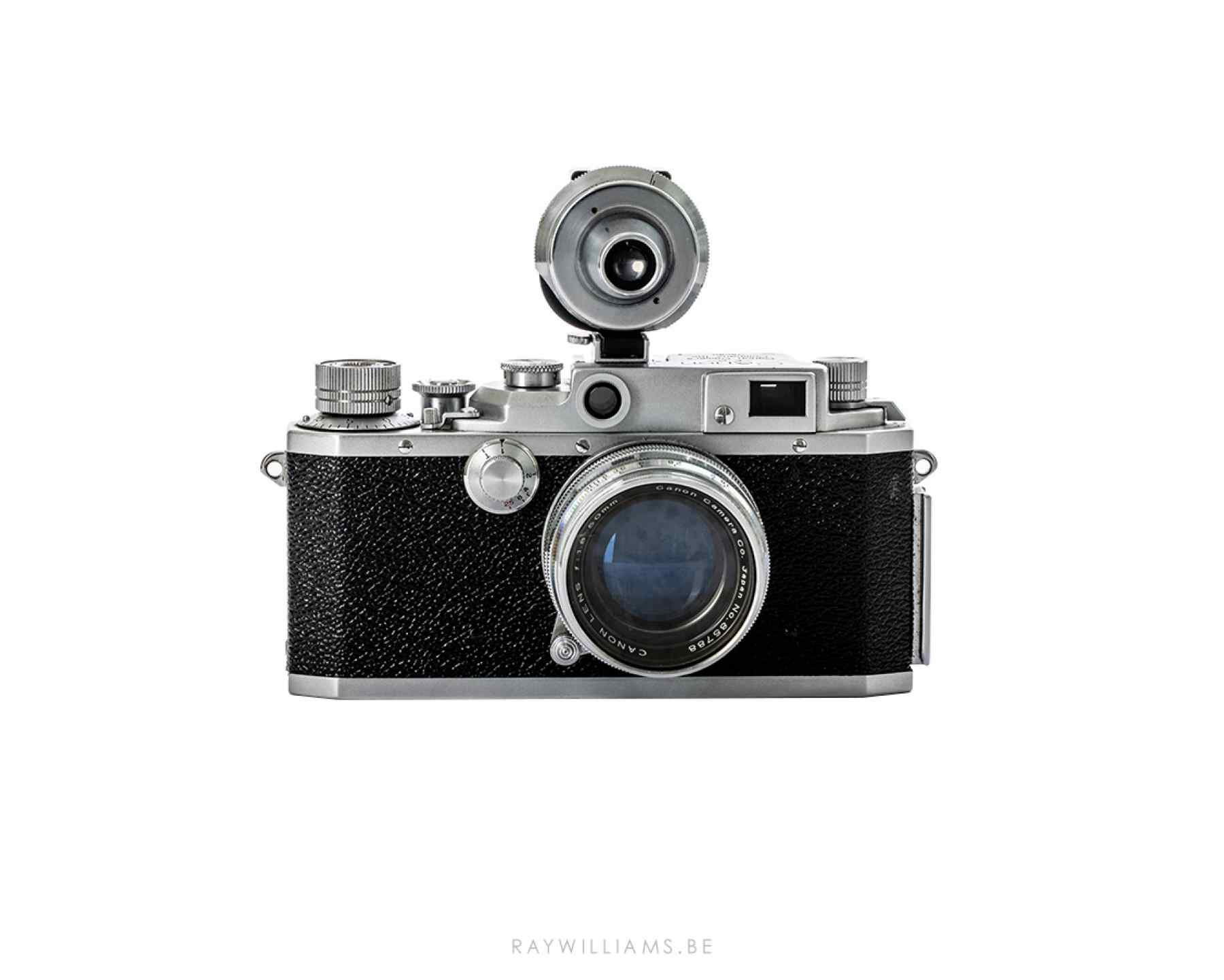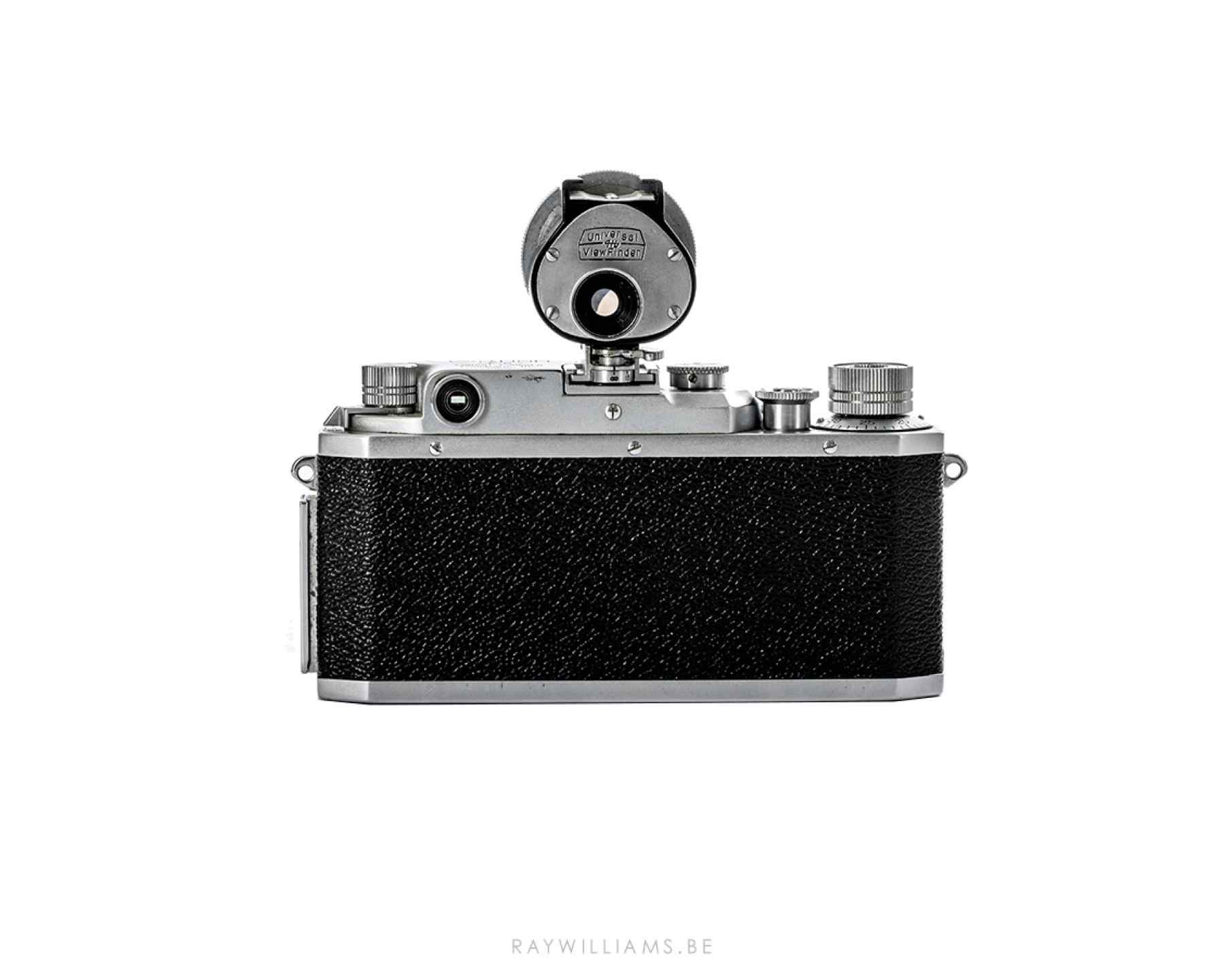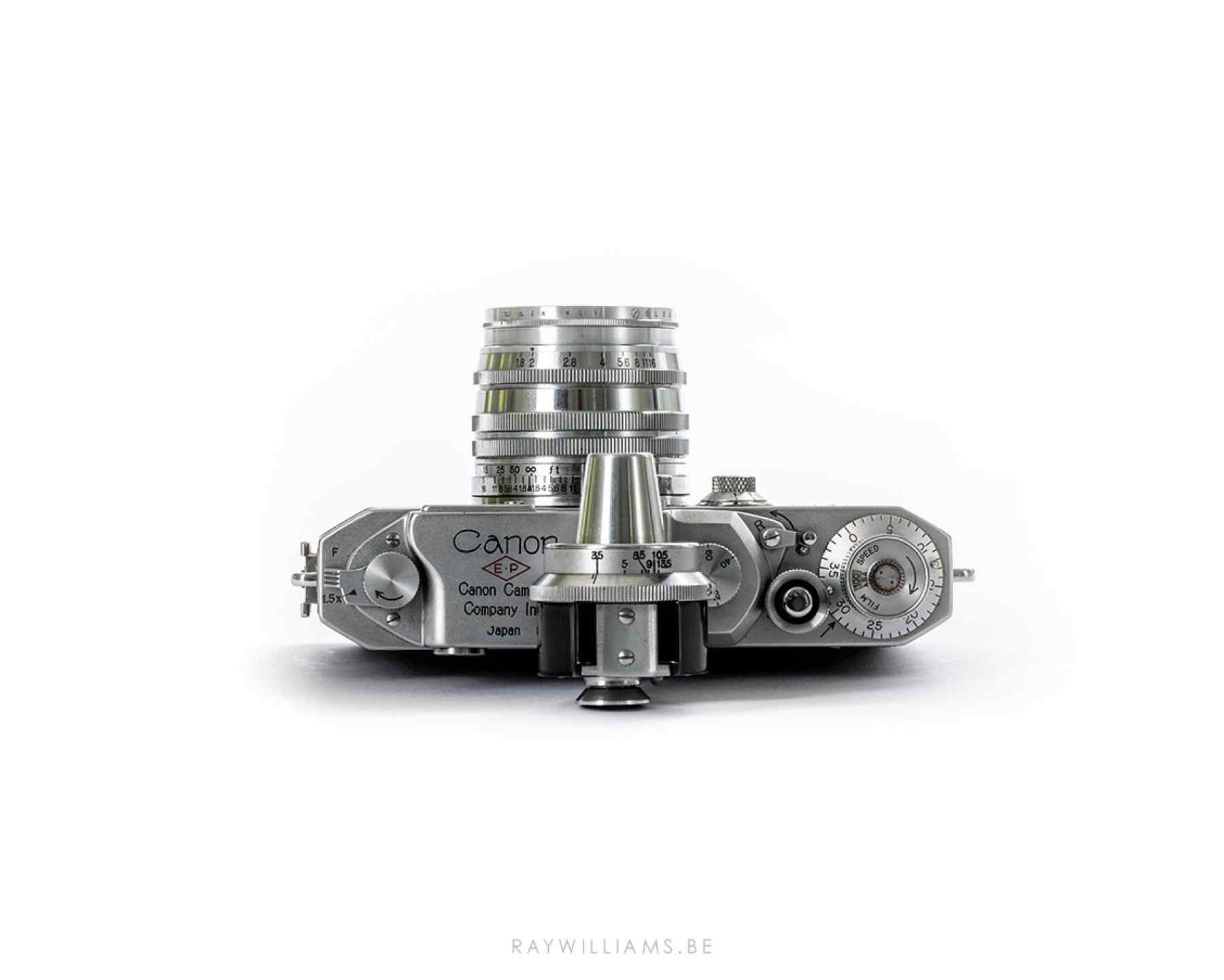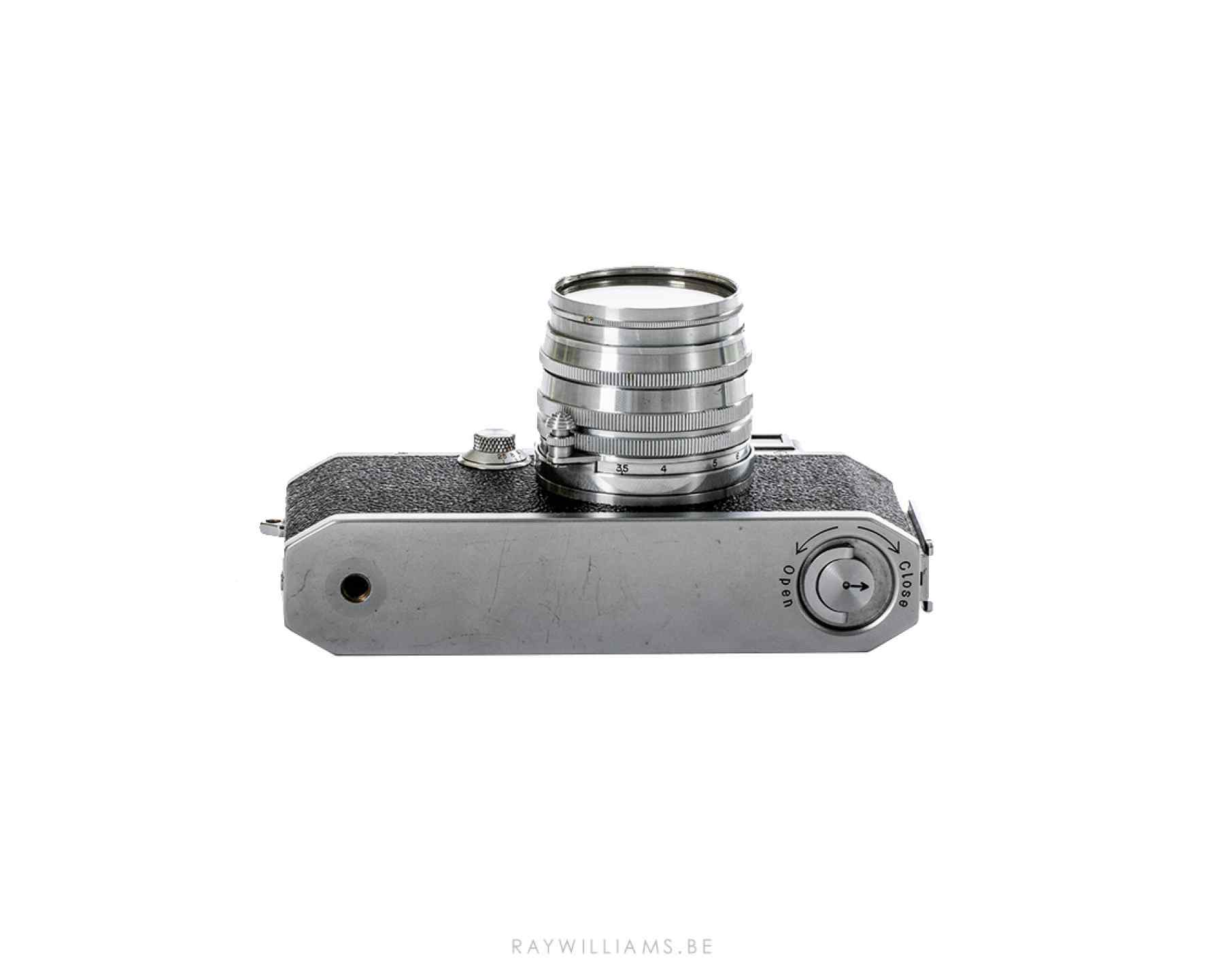The Canon rangefinders of the late 1940s and early 1950s are Leica-compatible screw-mount cameras. Many were brought to the U.S. by servicemen who bought them while visiting Japan during the Korean War. Typically these were mounted with a 50mm Serenar (later, Canon) lens.
Many of these can still be used, and are similar in function to the Leica III. The top speed is 1/500. Some models are flash synchronized, using Canon's side-rail synch contacts. The lens mount is compatible with all standard Leitz M39 mount lenses
The original ones came with a spring-loaded takeup spool that most photographers found easier to use than the one provided by Leica—many are now missing the spool since the spools were taken for use in Leica cameras.
Unlike many Leica copies, quality control and finish are fully up to Leitz standards.
The noticeable difference between The Canon and other LTM (leica thread mount) rangefinders is the angled cornered casing.
Where the Canon cameras surpass the Leica is the finder. Viewfinder and rangefinder are integrated, and a three-way switch allows a view for 50mm, 100mm, and critical rangefinder use. This arrangement made the viewfinders on Canon II/III/IV cameras tend to be dimmer and less brilliant than their counterparts found in Leica or other Barnack-style copy cameras.
The Canon IIF of 1953
In 1953, the military Post Exchange system was in full activity, selling duty-free items to the the many USA (and perhaps Allied) military personnel in Japan and Korea. This was the period of the Korean War, and as well as Korea, there were many US military personnel still in Japan. The Canon IIF introduced in 1953 was specifically produced for export and was not sold in Japan. So, nearly all sales were to the PX stores.
Canon IIF Characteristics
The Canon IIF was designed to be attractive to the Post Exchange military customer. It had a combination of attributes:
- included flash synchronization for flash bulbs via a flash rail built into the side of the camera
- more economical shutter having a 1/500 top speed.
- the 50mm f1.8 lens in a rigid chrome setting was standard on all IIF cameras.
- a combination of high quality construction with low price. Since it was not sold in Japan, Canon was able to offer a low selling price, while it incurred no commercial or distribution expenses.
| Name: | Canon II F |
| Manufacturer: | Canon Camera Company Inc. |
| Made in: | Japan |
| N°: | 119618 |
| Production Date: | |
| Type: | 35mm focal-plane shutter camera |
| Series: | II Series |
| Picture Size: | 24 x 36 mm |
| Normal Lens: | Canon 50mm f/1.8 |
| Collection Lens: | |
| Lens Mount: | M39 |
| Focus: | Manual Focus |
| Shutter: | Two-axis, horizontal-travel focal-plane shutter with cloth curtains. Single-axis rotating dial for T, 1, 1/2, 1/4, and 1/8 sec., and single-axis rotating dial for B, 1/25, 1/40, 1/60, 1/100, 1/200, and 1/500 sec. |
| Dimensions & Weight: | 136 x 72.2 x 31 mm |
| Production Period: | July 1953 - March 1955 |
| N° Produced: | 12.000 |
| Original Price: | Selling price at the time unknown. As example Canon IID was sold 56.000 Yen in 1952 |
| Indexed Price (Approx.): | 2.750 EUR |
| Avg Ebay Value: | 300 EUR |
